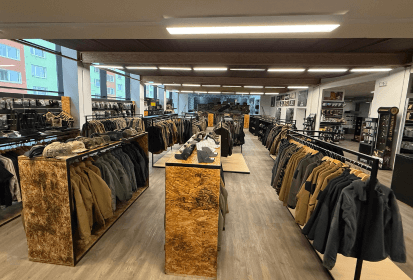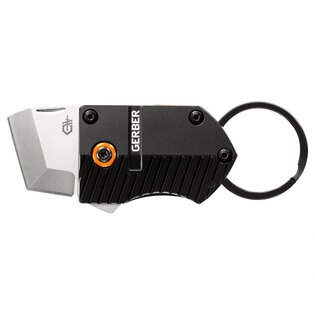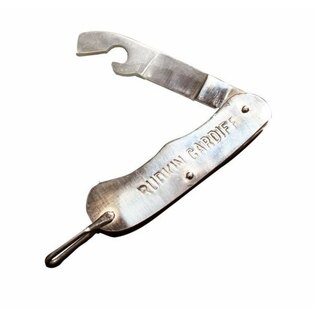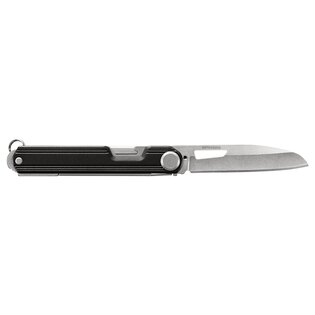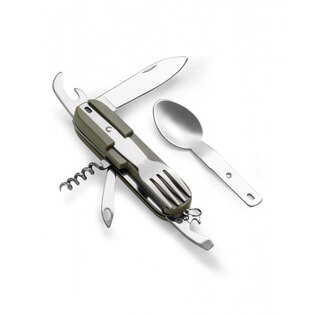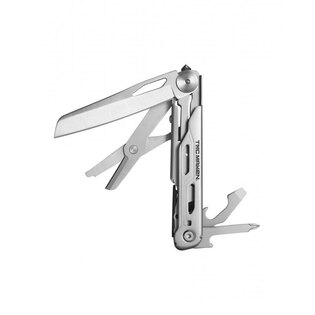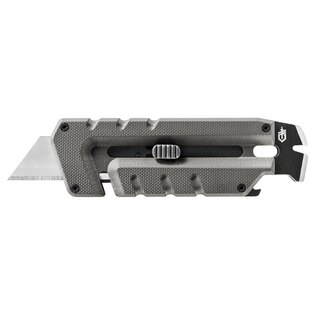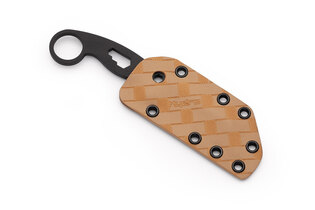The long history of the multitool
Did you know that the first surviving multitool appeared on our land between 201 and 300 AD and served as a replacement for the spoon, fork, spatula, toothpick, spike and knife? The history of the multitool is full of interesting and novel stories based on everyday needs and situations experienced by people across the centuries.
The first surviving multitool
The idea of a universal tool that could cope with most situations originated already in ancient Rome. During the reign of Emperor Trajan, the territory of Rome covered an incredible 6,500,000 km2 and extended to all the countries along the Mediterranean Sea. The emperor continued to extend his influence into Gaul, much of Britain and the Black Sea. Because of the vastness of the empire, in many places it was necessary to travel greater distances through uninhabited territories. The inhabitants simply could not buy everything they needed on the way and therefore had to carry the necessary equipment with them at all times. Heavy knives, forks, spoons, plates and bowls became a thorn in the side of many adventurers, who regretted every extra weight they carried after walking dozens of kilometres.
And so it happened one day that an unknown traveller had had enough of lugging around all the equipment and had the first surviving predecessor of the multitool made. Archaeologists have found a folding tool made of iron and silver on the territory of the Roman Empire, which historians have dated to between 201-300 A.D. The tool consists of a fork, spoon, spatula, toothpick, spike and knife. The first example of the multitool is part of the collection of the Fitzwilliam Museum, Cambridge.

The oldest surviving example of a multitool from the collection of the Fitzwilliam Museum, Cambridge. Source: Web Archive.
Turning point
Of course, multifunctional tools were also produced after the fall of the Roman Empire in various countries around the world. Gradually, they began to move away from the eating utensils and more and more versions were created, but none of them became famous enough to enter the world market. That is, until the end of the 19th century, when two famous companies entered the scene. Victorinox, the company that came up with the Swiss Army Knife, and its long-time competitor, Wenger.
History of Victorinox
The company was founded in 1884 as a cutlery workshop made famous by its founder Karl Elsener. It should be added that the founder was very lucky, because the Swiss army decided to award Elsener a contract to produce a single-bladed closing knife that would be part of every soldier's equipment. Three years later, Elsener introduced a new rifle that could be disassembled using an ordinary screwdriver. These achievements made the company one of the most influential companies in the world.
The command was impressed and so decided to abandon the idea of one knife and go the way of several tools in one. Therefore, another contract was made to produce a versatile folding tool that would include a knife, screwdriver, can opener and reamer. And thus was born the famous Swiss folding knife, the new full-fledged successor to the ancient multitool.
Important milestones
But the history of the multitool is far from over with the creation of the first army folding knife. In the late 19th century and throughout the 20th century, the multitool saw a number of changes that led to today's feature-packed models.
- 1893: founding of Paul Boechat & Cie (later Wenger).
- 1897: Karl Elsener patents a Swiss officer's and sports knife.
- 1908: Swiss Amrad concludes a contract with Paul Boechat & Cie (Wenger) and Elsner (Victorinox) for the production of army knives. To avoid conflict, it sets the same specifications for the knives for both companies. In addition, it divides the contract equally between the two companies.
- 1909: Karl Elsener renames the company to Victoria to honour the memory of his late mother.
- 1921: The invention of stainless steel, internationally referred to as Inox. Renaming the company to Victorinox.
- 1931: Carl Elsener II takes over the management of Victorinox and introduces the first fully electric automation. Since then, all knives have been produced in exactly the same quality.

Today, the multitool is a common part of outdoor and survival equipment.
The end of an era
V důsledku teroristických útoků z 11. září 2001 došlo ke zpřísnění mezinárodních letištních předpisů. Prodej švýcarských armádních nožů v bezcelních obchodech tak utrpěl velkou ránu. Na základě toho došlo k převzetí společnosti Wenger jejím dlouhodobým konkurentem - společností Victorinox. V současné době obě společnosti stále existují a nadále vyrábí řadu rozmanitých produktů včetně původních verzí švýcarského armádního nože. Došlo pouze ke změně zastřešujícího názvu na Victorinox AG.
As a result of the terrorist attacks of 11 September 2001, international airport regulations were tightened. The sale of Swiss army knives in duty-free shops suffered a major blow. This led to the takeover of Wenger company by its long-standing competitor Victorinox. Today, both companies still exist and continue to produce a variety of products, including the original versions of the Swiss Army Knife. Only the overarching name was changed to Victorinox AG.
A new player enters the scene
Společnosti Wenger a Victorinox jsou pro vznik multitool nepochybně nepostradatelné. Po dlouhá léta na sebe výrobci dotírali, poté přistoupili na pro obě společnosti poměrně pohodlný způsob výroby s minimální konkurencí, který ale v zásadě nenabídl žádné zajímavé inovace. A tak se zrodila poptávka po novém, inovativním nástroji, který by v sobě měl i funkce, které švýcarský nůž kombinovat nedokázal. Volání veřejnosti vyslyšel v roce 1983 mladý nadějný výrobce Tim Leatherman.
Wenger and Victorinox are undoubtedly indispensable for the creation of the multitool. For many years, the manufacturers had been pushing each other, then they settled on a relatively comfortable way of production for both companies with minimal competition, but which basically did not offer any interesting innovations. And so the demand for a new, innovative tool was born, one that would incorporate features that the Swiss Army Knife could not combine. The public's call was answered in 1983 by a young up-and-coming manufacturer, Tim Leatherman.
The origin of the idea of a multitool with pliers
The idea of a multitool with pliers was conceived during Leatherman's trip to Europe in 1975. Tim and his wife, Chau, were constantly dealing with leaky hotel pipes on their trip. They were also often busy repairing their broken-down Fiat. These difficulties made Tim realize that instead of his scout knife, he needed a pliers-based multi-purpose tool. Upon returning to the States, he immediately sat down at the drawing board and made several sketches of the multi-tool.
The thorny road to success
But the road to success was not as easy as Tim had imagined. He had originally estimated that it would only take a month to design a prototype. The month gradually turned into years, and Tim presented the patent and prototype after three years of development. Unfortunately, that wasn't the end of the long waiting period either. Tim showed real determination when he survived three and a half years of constant rejection of his prototype. But one day he thought he might join forces with his college friend Steve Berliner. Together they won their first order for 500 tools from Cabela's in the spring of 1983. The first mass-produced Leatherman tool saw the light of day.
Many years have passed since the first order and Leatherman is constantly improving and innovating its products. The multitool has seen many adaptations for different environments and different needs of adventurers. You can use their tools not only when climbing mountains, fishing, building shelter, but also in everyday activities.
Readers are further interested

